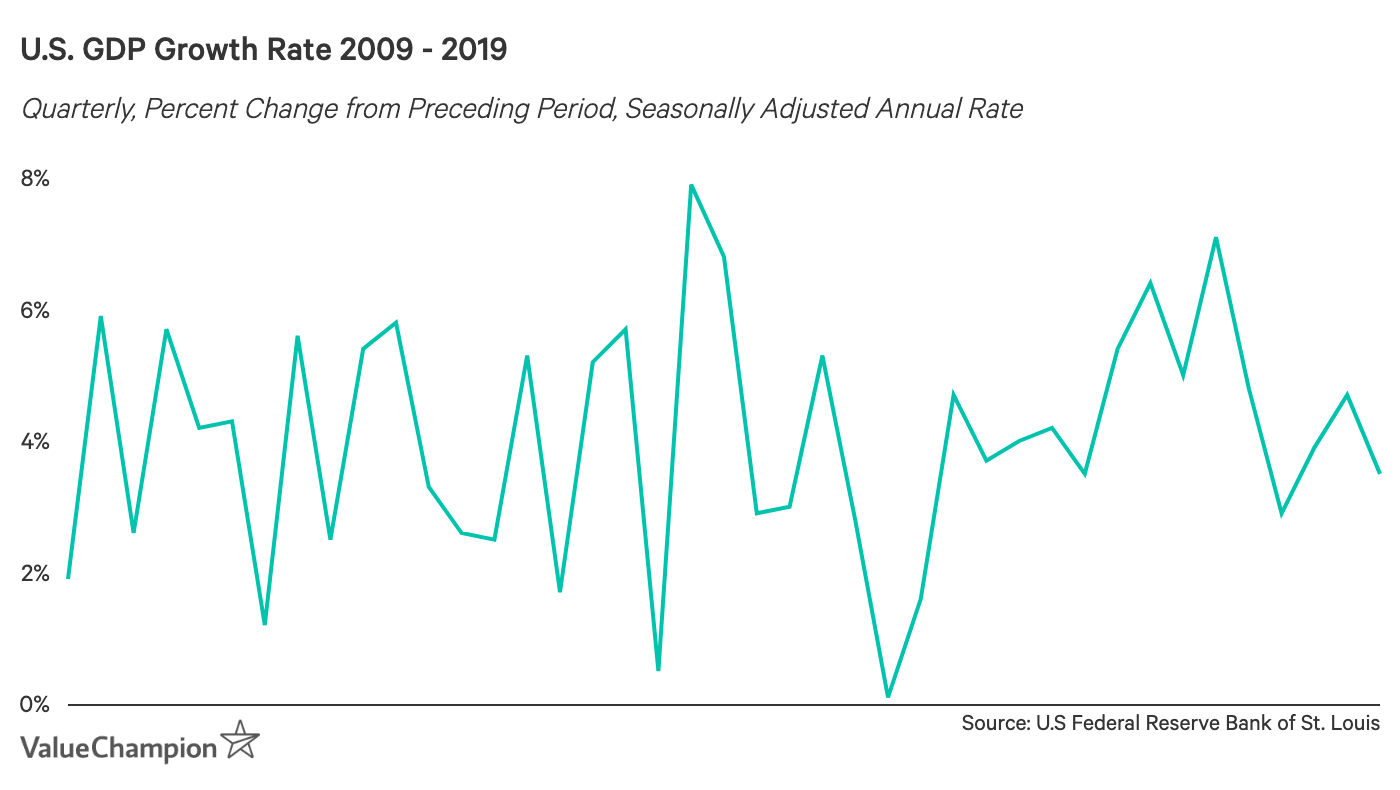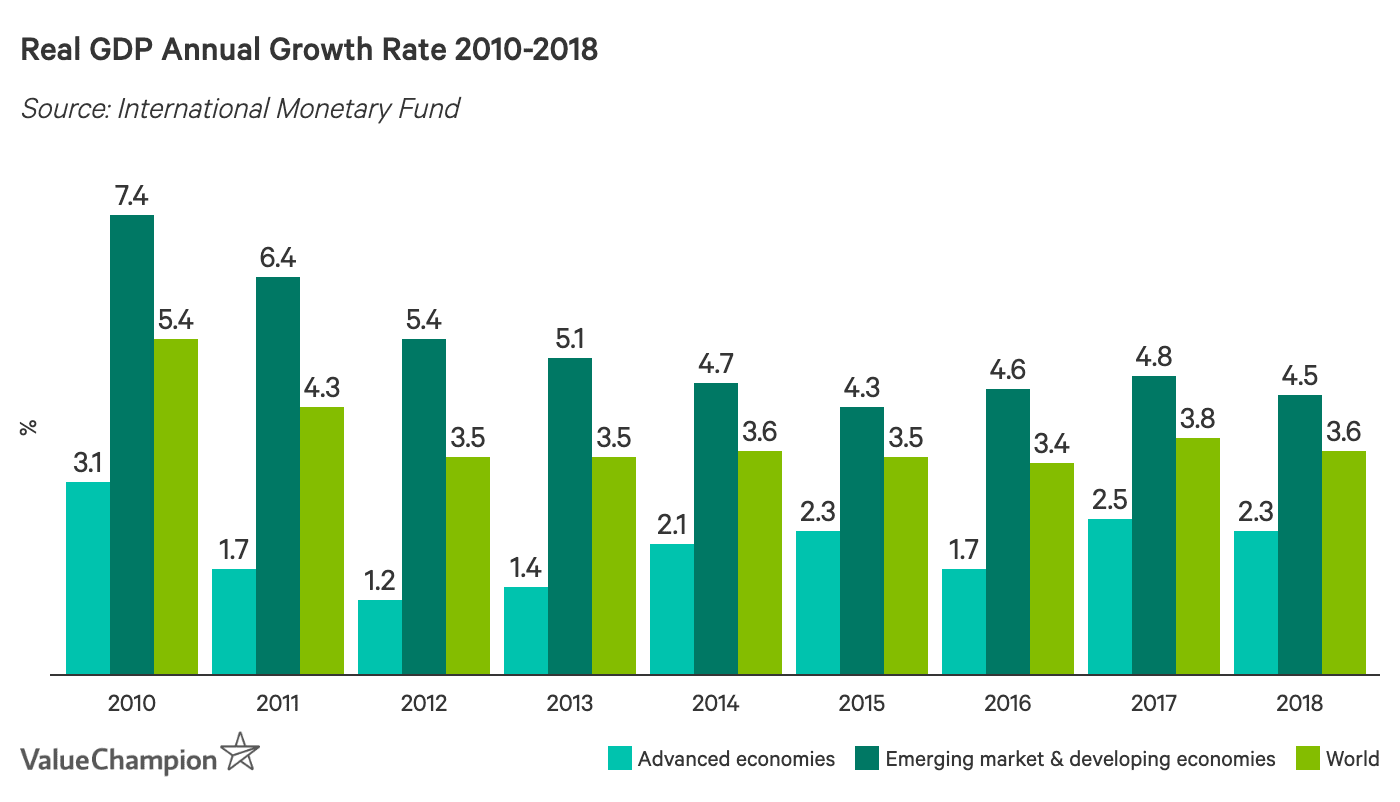What the Trade War Means for the Everyday Investor
The economic expansion that began in the US in June 2009 has continued, uninterrupted, for more than 10 years, and is now the longest expansion in history, breaking the record of 120 months of economic growth from March 1991 to March 2001. The equity bull market is also ageing along with the economic cycle, meaning investors not only have to contend with rising economic uncertainties but also a late cycle investment environment.

Even without the trade war we still have a slowing economic cycle to contend with, and strong US dollar wreaking havoc on global growth, which will be a significant hindrance to any reflation or green shoots. Meanwhile geopolitical constructs that have upheld the global order as it has stood since World War II fall into disarray. Multiple geopolitical flashpoints mean global markets and investors are hit with a confluence of uncertainties. This makes multi-asset trading, diversification and hedging all the more important for navigating late stage markets.
Comprehensive Deal Remains Unlikely as US-China Relationship Fundamentally Changed
Markets have been in a state of flux as competing themes have taken the stage, each battling to dictate global risk sentiment. Namely the US/China trade dispute, along with global growth concerns continues to rattle markets.

At present the “on again, off again” tensions have cooled, and optimism prevails on the hope that the US and China are close to inking a “phase one” deal. As always, the devil is in the details and this phase one accord amounts to more of a confidence building exercise, keeping hopes alive for an eventual more comprehensive trade deal further down the track. Although, the fact that the two sides are continuing negotiations and that scheduled tariff hikes have been delayed is positive. However, many sticking points remain and without the threat of the December tariff hike removed a partial deal is unlikely to be signed by China, so tariff hikes remain a risk.
The two leaders, President Xi and Trump were expected to meet at the APEC summit, where it was hoped the “phase one” deal will be signed. With the cancellation of the APEC summit, there is hope that the two parties will arrange another meeting soon. Previous meetings between the two leaders have rendered a positive outcome so we can’t rule out the possibility that President Trump caves and delays the December tariff hike to 2020 in a bid to ink a partial deal with China. Trump’s actions are likely to be a rolling calculation of what most appeases his voting base and keeps the equity market elevated. Therefore, delaying the December tariffs may be a moving target; however, appetite for a partial deal and claiming a small win seems high on both sides. Regardless, a partial/interim deal, will only provide temporary relief from long-term bilateral tensions.
With each week that passes geopolitical ties fray further and any semblance of a comprehensive trade deal looks a long way off. If we tune out the noise on a mini deal and look at the actions, we clearly see bilateral tensions escalating – NBA clashes, supply-chains relocating, tech blacklists, and visa restrictions all leave the relationship in a difficult place. The true nature of the relationship between the US and China has fundamentally changed and even a trade deal will not solve this problem. The gloves are off, and these two superpowers are in the ring punch for punch, from the trade war, to the tech war, to currency war and even the NBA, it looks like no tool is off the table.
It seems that a deal remains a long way off. China has again stipulated the US must wind back existing tariffs as a precondition to any deal. Therefore, it appears that the tariffs and trade negotiations may represent a far deeper rift that cannot be easily resolved in a trade deal. This is a long-running economic conflict and battle for tech dominance and hegemony. China may continue their strategic push to become technologically advanced as the productivity gains required from advanced tech and AI to transform itself to a high income country.
Investors should also keep in mind, even in the face of a future ceasefire on trade, the nature of the relationship between the US and China has evolved, and the battle for tech dominance and hegemony is likely to rage on.
With Volatility Present, Active Strategies & Diversification Still Important
For the global economy and global equities, a pause on tariff hikes is unlikely to have a meaningful impact on growth. There is nothing on the horizon to suggest that already implemented tariffs will be rolled back anytime soon and tariff escalation remains a real risk. This means that uncertainty remains and an interim deal may not be enough to reignite business confidence and investment that would be needed to recalibrate global growth expectations higher.
Therefore, even a partial resolution and a signed “Phase One” deal, without a corresponding stabilisation in growth, it is unlikely to repair risk sentiment fully. When we cut through the noise and trade headlines to the economic data, the message is clear that the global economy continues to slow and the low point in growth is ahead of us not behind. We may be getting closer to approaching a cyclical turning point and we can't rule out a stabilisation in economic growth in 2020, but believe it would be too early to position for. In this instance, diversification and a focus on capital returns and preservation, will serve well. This is because a diversified portfolio reduces risk by not being concentrated in one specific area of investments. As assets tend to rise and fall at different times, if investors have exposure to a range of assets, a fall in one will likely be balanced out by an increase in another, thereby helping to minimize losses and provide a more stable overall return. This is a key benefit of diversification and an important component of managing risk and reaching long-term financial goals.
It is important to remember that when volatility picks up larger trading ranges are driven by falling liquidity and the expansion in trading ranges is not only to the downside, but to the upside as well, so even falling markets can witness fierce upside rallies.
This is where multi-asset product offerings and self-directed trading and investment can be of use allowing traders and investors to be nimble across a range of asset classes. Saxo. Today, online trading apps are easily accessible via numerous providers. In particular, Saxo Market's platform offers some of the best market access to stocks, bonds, ETFs and foreign exchange trading, while consistently charging lower fees than its competitors. Still, several barriers remain intact or have newly emerged, and many traders and investors are still limited in their opportunities and ability to act. Return expectations and the outlook for the reconfiguration of global supply chains, which are now under assault as the trade war rages, will mean that investors who can remain nimble and tactical may fare better.
ValueChampion partnered with Saxo Strategist Eleanor Creagh in the creation and publication of this article.
